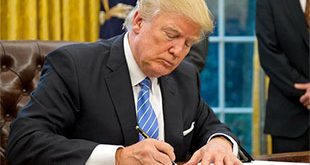
Berlin, Germany | AFP | When Berlin’s despised Wall went up in 1961, the divided city overnight became an imposing landscape of barbed wire and guards with shoot-to-kill orders.
But below the earth, desperate Germans began digging dozens of tunnels to try to burrow their way to freedom, or liberate easterners who were prisoners of their own country. Only a lucky few succeeded against the odds.
Thirty years on after the joyous fall of the Wall, Boris Franzke, now 80, recalls his hair-raising, subterranean adventures between the communist east and the capitalist west — once with the unlikeliest of allies.
Franzke, who helped several easterners escape, said: “At first I wasn’t interested in politics. I didn’t feel affected by the tensions between the Soviet Union and the West.”
All that changed the night of August 12-13, 1961 when the Stalinist state moved to seal the border to stop a mass exodus of easterners to the west. From 1949 until work on the Wall began, 2.7 million had crossed from east to west.
“That famous night was the trigger,” Franzke told AFP, when he as a 22-year-old man was cut off from his friends, his family and even his fiancee, who were all living in the east.
– ‘We were devastated’ –
Franzke’s brother Eduard, whose wife and two children lived “on the other side”, suggested that they build an underground pathway.
But they were betrayed on their first attempt and the family still in the east was thrown in prison.
“We were devastated but said that we’d keep at it because each person we brought back to the west would weaken the GDR a little more,” he said, fighting back tears.
From the time the border was sealed until 1964, the brothers took part in the building of seven tunnels, only two of which achieved their purpose. Between 26 and 28 East Germans, according to Franzke, spirited themselves to the west through them.
“In his own way, Boris Franzke was certainly a member of the resistance,” said historian Sven Felix Kellerhoff, co-author of “Underground to Freedom” about the escape tunnels.
“These courageous young men,” he said, offered “selfless help in escaping — it never involved payment and its sole purpose was to weaken the single party regime”.
In total, 75 tunnels ran below the city during the 28 years the Wall stood, although only 19 succeeded in allowing fugitives to escape to the West — around 400 people, according to the Berlin Underworlds group which organises historical tours in the capital.
– A trap –
But the most indelible moment came in the summer of 1962 when the two brothers, who had made a name for themselves among the shadowy group of “diggers”, wanted to bring several acquaintances of a friend to the west.
The spot they chose, on the outer fringe of the city’s western sector bordering on the eastern state of Brandenburg, was not closely monitored.
The risks of flooding were low and the sandy soil did not require reinforcement of the tunnel walls.
The Franzkes and two friends dug day and night for five weeks until the passage — 80 centimetres (31 inches) wide and 80 metres (yards) long — opened into a garden where 13 potential escapees were to be waiting.
But as soon as they arrived, they saw it was a trap: instead of
dissidents hoping for freedom, who had in fact been arrested a few days before, they found Stasi agents ready to pounce.
Three of the diggers managed to do an about-face in the tunnel but their friend Harry Seidel, the first to emerge, was caught and interrogated.
Sentenced to life in prison, this “public enemy number 1” of the SED party would later be “bought” by the West German government in 1966, a common practice at the time.
It would take until 2010 for Boris Franzke to learn that he had narrowly escaped a grisly death: the East German authorities, exasperated by him and his brother, had wanted to blow up the tunnel with five kilogrammes (11 pounds) of explosives.
– ‘My hero’ –
“The supplies were ready but at the moment they were to go off, nothing! The wick (on the explosives) had been cut,” Franzke said.
As for the saboteur, historians say it was likely a lieutenant-colonel of the Stasi secret police, Richard Schmeing, who died in 1984.
“As strange as it sounds, he’s my hero. He put his life on the line to save four people,” Franzke said.
Schmeing had been imprisoned at two concentration camps under the Nazis for his membership of the communist party. From 1949 until 1968 he worked for the Stasi.
His motives, presuming he was the one who prevented disaster, remain shrouded in mystery.
Was he a brave humanist? Did he suffer from a guilty conscience? Was he moved by the presence of a young couple who happened to be nearby?
In any case the golden age of Wall tunnel building would soon come to an end, followed by a major fortification of the border between the two Germanys.
“80 percent of the tunnels were dug between the time the Wall was built in the summer of 1961 and October 1964, when a border guard was supposedly shot by an escaping fugitive,” said Marc Boucher, a guide with Berlin Underworlds.
“This event shifted public opinion in the West which was until then very supportive of these methods of escape.”
It was not until reunification in 1990 that it emerged that the guard was in reality killed by accident by one of his colleagues.
 The Independent Uganda: You get the Truth we Pay the Price
The Independent Uganda: You get the Truth we Pay the Price


